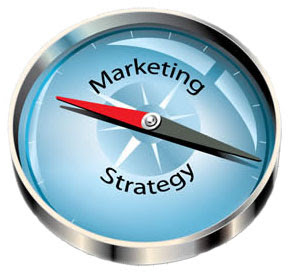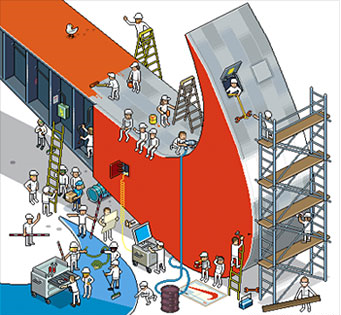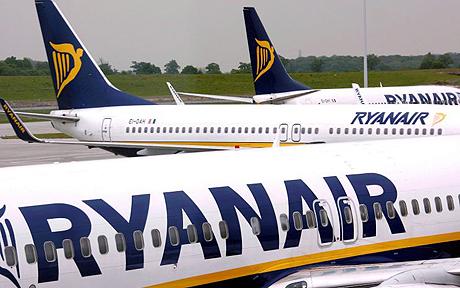General Motors Marketing Analysis
Company Profile of General Motors
When it comes to automobiles, one of the most recognized brands out there is General Motors. The American multinational corporation based in Detroit, Michigan designs, manufactures and sells vehicles as well as automotive parts.
With a history that dates back to 1908, General Motors has had a critical role in both the American as well as global auto industry. Some of General Motors well-known brands presently in the market include Buick, Cadillac, Chevrolet and General Motors. The company builds cars and trucks through its other units: General Motors Daewoo, Isuzu, Opel, Vauxhall and Holden units.
The present General Motors that we know today is a result of a company split following a government backed Chapter 11 bankruptcy reorganization. In November 2010, General Motors had its initial public offering, which was one of the highest ever recorded (General Motors, 2014).
Marketing Strategy and Environmental Scanning
The core of any effective business plan is a marketing strategy that will outline how a business will set out to deliver its products to the satisfaction of its customers. Success requires effective marketing in order to remain competitive in today’s global market.
Organizations, regardless of its size must be able to identify and understand external influences to be able to adapt to the present realities that will ensure the company’s survival and success (Albright, 2004: 39).
Plans are based on forecasts which in turn are based on assumptions about what is to be. Scanning the horizon of possibilities is a prudent measure that companies take in order to identify new developments that will test past assumptions or provide insight on new perspectives to possible future threats or opportunities (Gordon & Glen).
A vital tool that will aid companies to focus on strategic and tactical plans is environmental scanning. Environmental scanning is the internal communication of external information about issues that may potentially influence an organization’s decision-making process. It helps organizations flush out external threats thus enabling them to maneuver appropriately (Albright, 2004: 40).

Environmental scanning may act as an early warning system that will detect and warn companies about important changes and “danger zones” allowing for plans to be altered as necessary. Futurists do environmental scanning in one way or another, all with the ultimate goal to distinguish what is constant, what changes, and what constantly changes. The basic goal of a scanning system is simply to find early indications of possibly important future developments to gain as much lead-time as possible (Gordon & Glen).
Stoner and Freeman (in Costa & Teare, 2000: 156) defined strategic planning as “the development of long range plans for the effective management of environmental opportunities and threats in the light of corporate strengths and weaknesses.” It is therefore accurate that through scanning or the so-called “realized” approach identification and management of environmental opportunities as well as threats can be helpful in the fundamental management of competitive advantages of companies.
In addition to this, environmental scanning can be classified under different areas including social, economic, technological, and political/regulatory. An analysis of these different areas will give an organization a comprehensive assessment regarding the organization (Ginter & Duncan, 1990: 91).
Previous experience on the environmental scanning process has revealed that too much priority is given on the short term which has led to a limited understanding of information. This has led to a basic goal of extracting information, customer service, and the like which ignores the other factors present in the general environment (Costa & Teare, 2000: 157).
The General Motors Way
In analyzing the advantages of General Motors as an organization, there have emerged a number of key strengths including its industry knowledge. With its long history in the automotive field, General Motors has an expertise many can replicate. Time and time again it has been a proven industry leader. In addition to this, technology and innovation has critically improved the company’s products and services and as such have provided customers with key technological advancements that are not only necessary but highly demanded.
Analysis of Strategies, Strengths and Limitations
Recognizing the abovementioned realities, there are still a number of areas of improvement that General Motors needs to focus on including its human resource inefficiency and mediocre scientific achievements, to name a few.
From a marketing standpoint, these situations are potential marketing threats. These internal and external issues hurt the image of General Motors as a company.
In the recent years, General Motors has undergone a number of changes, including its marketing strategy. With a new vision and communications platform called “Find New Roads,” General Motors aims to be the touchstone for the brand as it develops new products and technologies for sale in more than 140 markets (Evans, 2013).
With regards to General Motors efforts, a well done environmental scan has enabled it to identify the realities of the industry and understand its key competition and potential difficulties in meeting the challenge of competitors (Albright, 2004: 40). In this key aspect, General Motors has been able to realign its focus and capitalize on the opportunities that can be found in Asia, specifically China.
In reconsidering its emerging-market strategy, General Motors has been working towards positioning itself for emerging markets of its Chinese partner SAIC Motor Corp (Shirouzu, 2013).
Globalization is a market reality; in order to improve upon the new direction of General Motors to move towards Asia, strategists need to take its efforts a step further and stress test their scanning models. Geographical expansion brings about different considerations. It’s important that through analysis, General Motors can determine the circumstances of desirability as well as risk and restrictions (Beinhocker et al, 2009: 56).
By delving into developing markets, General Motors will be able to think about producing a lower end range of vehicles that consumers from developing markets would be keener on purchasing. An environmental scan would show that emerging markets are not as badly hit by financial setbacks and thus still possess a higher growth rate which equates to an increasing buying power. This would mean while other regions would have slower auto sales, areas in Asia could be a strong sales point.
Scanning would also bring about competitive intelligence as a result of an analysis of competitors and competitive conditions in particular industries or regions. This would enable managers to make informed decisions about marketing, R&D, as well as long-term tactical business strategies. It enables managers to cast a wider net and analyze information about the various sectors of its external environment that will support forward planning (Choo, 1999).
In the case of private transportation sales, a market like China has a high demand for automobiles and it can be safe to say that there will not be any environmental emission deals coming up soon. This can show this as a great potential for profit given the smaller investment, rapid production and low initial costs.
The process looked into identification of emerging issues and trends as well as situations and drawbacks that may affect its success and future. This new strategy opens a lot of opportunity for rapid sales (Shirouzu, 2013).
This example as well as others shows that General Motors has made efforts to stay ahead of the game but this is not enough. General Motors marketing strategies have a need for more improvement. It’s been noted that while their global presence cannot be underestimated, their focus and primary marketing strategies are centered on a limited number of countries. Each country requires its own marketing approach given each economy and marketing conditions vary from each other. A much more tailored, innovative and globally applicable strategy must be applied to achieve multiple targets on a larger scale.
As an example, consider nature, in the last few years, the market has seen an increase in the demand for alternative fuel technologies. Environmental scanning would flag this as rising market trend that General Motors needs to look into. Research and development must be supported to work towards being able to address this future pattern. The company must look towards tweaking its image to make it more concerned for the environment to achieve credibility in this area.
However, the company is already lagging behind its competitors, specifically Toyota. Although General Motors has been producing more efficient products, it is not rising to the challenge that its rivals have been able to in the last few years.
As mentioned earlier, there are various aspects that a scan can look into, be it social, economic, technological and the like. For businesses like General Motors, given its size and holdings, focus tends to be on the economic but such a one-sided scan can lead to misrepresentation or error in analysis leading to a gap between the goal and the outcome which puts an organization in jeopardy. It is imperative scans be as holistic as possible. This is related to the earlier recommendation on the unique marketing strategies per region. A wider analysis of current and potential change and the assessment of the impact of changes on the organization (Ginter & Duncan, 1990: 91)
In reviewing the marketing strategies of General Motors as discussed in their annual reports, their efforts bulk in the areas of publicity, direct marketing, sales promotion as well as traditional advertising.
Conclusion
For General Motors to continue on its path to growth and success, its marketing strategy must be on point. A vital component of its marketing system should include a comprehensive environmental scanning process.
The process should emphasize market research that focuses on specific target markets with strategic identification and unique approaches per market. There should be a parallel unique point of sale concept per targeted area that takes into consideration not only competition and economics but a holistic review of the various factors affecting market conditions.
Relatedly, strategic expansion will require optimal strategies form increasing sales. Realities of this shift in economic power, especially in emerging markets, should focus on affordability and practicality with a balance of quality and optional luxuries.
The research has revealed that General Motors has taken steps in the right direction but fail to grasp the full extent of the shifting patters in the global consumer market.
References
General Motors (2014) About Our Company, [Online]
Evans, H. (2013) General Motors Develops New Global Marketing Strategy, [Online]
Albright, K.S. (2004), Environmental scanning: radar for success, Information Management Journal, May-June, p.38-45.
Shirouzu, N. (2013) ‘General Motors rethinks emerging market strategy, hedges on China partner’, Reuters, 27 Jan.
Costa, J. and Teare, R. (2000) ‘Developing an environmental scanning process in the hotel sector’, International Journal of Contemporary Hospitality Management, Vol. 12, No. 3, p.156-169
Beinhocker, E., Davis, I and Mendonca, L. (2009) ‘The 10 trends you have to watch’, Harvard Business Review, 87, 7/8, pp. 55-60, Business Source Premier, EBSCO Host,
Ginter, P.M. and Duncan, W.J. (1990) ‘Macroenvironmental analysis for strategic management’, Long Range Planning, Vol. 23, No. 6, p.91-100
Gordon, T. J., and Glenn, J. C., ‘Environmental Scanning’, AC/UNU Millenium Project, Ver 2, p. 1-33.
Choo, C. W., ‘(1999) ‘The Art of Scanning the Environment’, Bulletin of the American Society for Information Science, vol. 25, No. 3.


